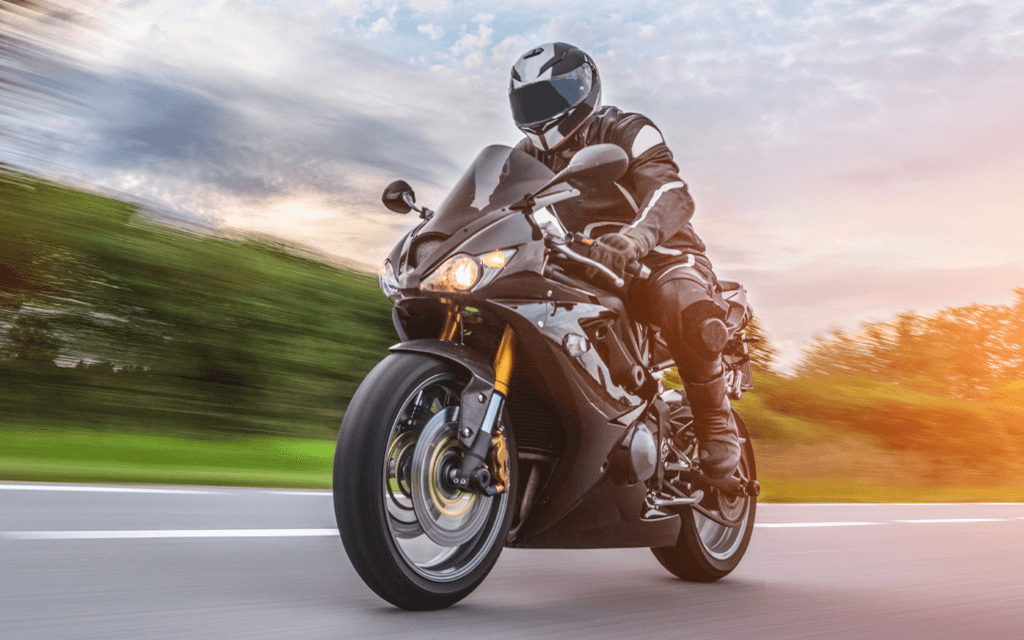The Isle of Man TT (IOM TT) returns today ahead of an eleven-day festival of motorcycle racing nirvana, where the tiny country between England and Ireland gathers the world’s greatest road racers to test themselves against the incredible ‘Mountain Course.’
Commonly described as the ultimate ‘must see it’ event for motorsport fans, the humble location in the middle of the Irish Sea offers a 37.73-mile course carved out of the island’s public roads.
Often coined as one of the most dangerous racing events in the world, the Isle of Man TT sees riders at average speeds of 130mph, which has resulted in the deaths of 265 riders since the inaugural race in 1911.
The 2022 race killed five riders, with two critically injured. One of those, Mike Booth, was forced to amputate his right leg after a devastating crash on the 26th turn of the course.
Death has long been accepted as part of the event, but last year’s showcase was overshadowed by the event’s most violent year since 1989.
Morality questions were thrown into the spotlight regarding the safety of the event, highlighted by social media comments demanding officials to “ban the TT,” while largely negative press littered newspaper columns.
Outcries for change are unlikely to be heard as race organizers continue in their pursuit to grow the race brand and beam the action to the mainstream audience across the world.
Reaching wider audiences…
A subscription-only live coverage was launched in 2022 for the first time in the event’s history, reaping 57,000 sign-ups, generating a return of about £854,000, and witnessing more than 130,000 people across 185 countries accessing the platform.
Enterprise Minister Tim Crookall said the coverage had “managed to remove geographical barriers to fans around the world” and would be used to attract younger race fans to “both ensure and sustain the island’s visitor income for the event.”
With the TT, the Isle of Man’s economy would be protected. In 2019, the last time the TT ran before 2022, the event generated somewhere in the region of £37 million to the Manx economy as thousands flocked to the island to watch the racing.
According to a BBC report in 2021, the COVID pandemic cost the Isle of Man treasury £246m.
Indeed, a recent documentary called ‘No Room For Error’ will further enhance the event’s scope and reputation. Akin to the likes of Netflix’s ‘Drive To Survive’ and ‘Full Swing’, the four-part series was broadcast over four consecutive nights earlier this month on ITV4 and ITVX and on the event’s streaming platform TT+.
The immense highs and shockingly tragic lows were laid bare to see in a raw and emotionally charged delve behind the curtain, with the producers not attempting to shy away from the complex moral dilemmas that plague the fortnight-long event.
Instead, it’s openly accepting of the reality of what can happen when it goes wrong – with the added injection of honest interview segments from the riders on just how they deal with the loss, weigh up the risk in their minds, and carry on for the rest of the festival.
Peeling away the emotion reveals the reality. The Isle Of Man TT is a government-led event that does kill people, but one which keeps the island afloat while providing riders with an experience and challenge like no other.
Without the TT, the golden era of the fifties and sixties with riders like John Surtees, Mike Hailwood, Giacomo Agostini, Phil Read, and Jim Redman competing in entertaining battles with machines and each other would never have happened.
Joey Dunlop, the ‘King of the Mountain’, would never have won 26 races throughout the 1980s before his nephew, Michael, would go on to achieve success in the 2010s, following in the footsteps of his uncle, who died while racing in Tallinn, Estonia, in July 2000.
Is it time for the TT to end?
Banning the TT, therefore, isn’t a simple decision with minimal ramifications. Those within the community question the media’s approach to the race, publicly shaming the dangers when a death occurs on public roads, but without truly understanding the deep-rooted history of the race.
One thing’s for sure. As the event’s popularity grows, not only will the TT itself benefit, but the island itself will flourish.
Organizers have taken steps to increase the safety of riders, with 2022 seeing a reduction in the number of starters for each 1,000cc race to 50, as well as the introduction of GPS tracking to aid accident response.
But, in truth, eliminating risk from a race that boasts incredibly high speeds along narrow winding roads lined with stone walls, trees, telegraph poles, and houses is impossible. Death and injury are an inevitable part of the race’s retro nature.
Riders fortunate enough to cheat death over the years following accidents still have to deal with potentially life-changing trauma.
A 1993 BJSM sports medicine journal titled ‘Trauma on the Isle Of Man’ reported that “during the two weeks of this year’s TT races, 1250 patients were seen in the casualty department.
“A total of 119 casualties from all sources were admitted, with 67 going to the orthopedic unit. During the 14 days of the TT, an average of 5.5 major trauma operations were undertaken daily, lasting an average of 1.1 hours.”
Despite suffering horrendous leg injuries, which resulted in the amputation of his right leg below the knee, Booth considers himself one of the lucky ones.
“Crashing where I did could (and probably should) have been a lot worse.” ‘Boothy,’ as he is known, was 14th in the Senior TT class in 2019, the last edition of the event before the Covid-19 pandemic, before entering the Superbike and Supersport categories the previous year.
On the final day of qualifying and around 26 miles into the course, Booth came off his bike after a sequence of right turns. Conscious the entire time, he was flown by helicopter to Noble’s hospital, but the injuries to both legs were so severe that he had to be passed to Liverpool, where he underwent multiple surgeries.
In a statement on 44Teeth, he said: “Losing my leg has been one of the most difficult things to get my head round and, if I’m being honest. It’s hard to explain something like that to others when you’ve not come to terms with it yourself.”
In 2018, Fiona Baker-Holden was riding as the passenger for her father in a sidecar race around the TT course when a bike fault caused the pair to crash at 130mph near Alpine Corner.
She has launched 20ft in the air, stringing a tree down to slam against the track. Doctors feared she would be permanently paralyzed after discovering she had broken her neck and suffered severe damage to her spinal cord. In contrast, her father, Tony Baker, suffered a smashed femur and needed pins and plates in his leg.
“I was aware that there was something wrong because I kept losing lots of my words and stammering when stressed,” said Fiona in an interview with Headway. “I pushed for a speech and language assessment and, following tests, was told that I’d probably suffered brain injuries in the accident.”
Once the fastest lady in history round the TT course in a sidecar, Fiona will never race again.
The same year, Steve Mercer was struck by a course car on its way to the incident which claimed the life of Tyco BMW rider Dan Kneen during practice for TT 2018.
In an immediate reaction to the incident, the ACU implemented a new red flag procedure, whereby all riders would only return to the paddock in case of a stoppage under guidance from the traveling marshals.
Mercer suffered a broken leg, a compound fracture to his femur, lost most of his quad muscle, ripped a main artery, broke his big toe, broke his ankle, and lost all ligaments in one of his knees.
One year after his accident, he said: “I’ve no idea what happened, and I’m still unaware of what happened and what went wrong. All I knew was I was sent on a collision course.
“A marshal told us to turn and head back the other way. You do what you are instructed to do by the marshals, and I’m just shocked by the whole thing.”
After suffering destiny-altering injuries, hundreds more riders have been forced to give up the sport they love.
But, it should be pointed out that riders compete knowing the dangers. For them, the thrill they get from racing at up to 200mph in terrifying circumstances outweighs the risks – and it’s their risk to take.
Even if it does lead to the end of the road.






